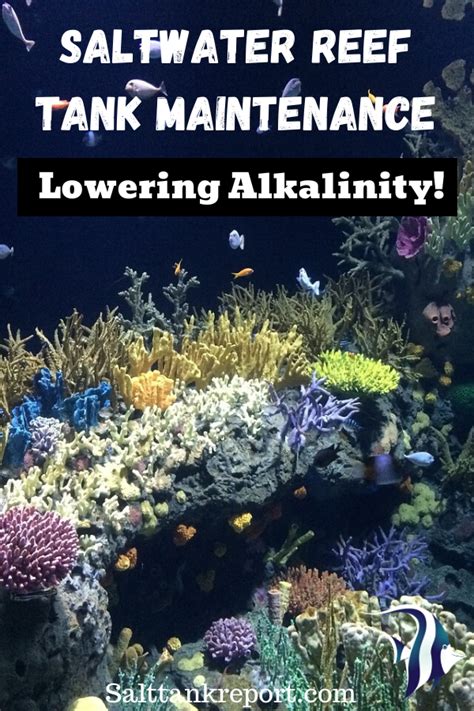Taming Your Tank's Alkalinity: A Simple Guide
Maintaining a healthy aquarium requires understanding and managing various water parameters. While pH often takes center stage, alkalinity is equally crucial, acting as a buffer against pH swings that can harm your fish and invertebrates. This comprehensive guide will demystify alkalinity, explaining what it is, why it matters, and how to effectively manage it in your aquarium.
What is Alkalinity?
Alkalinity, often expressed as dKH (degrees of carbonate hardness) or meq/L (milliequivalents per liter), isn't a single substance but a measure of the water's capacity to resist changes in pH. It represents the total concentration of carbonate (CO3 2-), bicarbonate (HCO3-), and hydroxide (OH-) ions. These ions act as buffers, neutralizing acids and preventing dramatic pH fluctuations that can stress or kill your aquatic life. Think of it as your tank's pH shock absorber.
Why is Alkalinity Important?
Maintaining the correct alkalinity range is vital for several reasons:
- pH Stability: A stable pH is fundamental for the health of your aquarium inhabitants. Alkalinity prevents drastic pH drops, particularly during the night when plants and microorganisms consume carbon dioxide and may alter the pH.
- Calcium and Magnesium Availability: Alkalinity influences the availability of calcium and magnesium, essential elements for coral growth (in reef tanks) and overall aquatic life health. Low alkalinity can impair their uptake.
- Invertebrate Shell Formation: For invertebrates like snails and corals, alkalinity is crucial for shell and skeleton formation. Insufficient alkalinity can lead to weak shells and skeletal deformities.
- Plant Growth: While not as critical as for reef tanks, a balanced alkalinity contributes to a healthy environment for plant growth, assisting in nutrient uptake and overall plant health.
What is the Ideal Alkalinity Level?
The ideal alkalinity level varies depending on the type of aquarium you have:
- Freshwater Aquariums: Typically, an alkalinity between 4-8 dKH is considered ideal. However, some plants and fish may prefer slightly higher or lower ranges. Always research the specific needs of your aquatic inhabitants.
- Reef Aquariums: Reef tanks require higher alkalinity, generally between 8-12 dKH. Maintaining this range is crucial for coral health and growth.
How to Test Alkalinity
Regular testing is paramount to ensure your alkalinity remains within the desired range. Use a reliable test kit, following the manufacturer's instructions carefully. Several types of test kits are available, including liquid test kits, colorimetric tests, and electronic meters. Choose the method that suits your budget and comfort level.
How to Adjust Alkalinity
If your alkalinity is too low or too high, you'll need to adjust it. Here's how:
Raising Alkalinity
- Sodium Bicarbonate: This is a common and effective method. Add small amounts, carefully monitoring the alkalinity after each addition. Avoid rapid changes; gradual adjustments are always safer.
- Commercial Alkalinity Supplements: Several commercial products are designed to raise alkalinity. Follow the product instructions precisely, as dosages can vary.
Lowering Alkalinity
Lowering alkalinity is generally more difficult and requires careful consideration. It's often better to address the underlying causes of high alkalinity before attempting to artificially lower it.
- Partial Water Changes: Regular partial water changes with appropriately buffered water can gradually lower alkalinity over time.
- Reverse Osmosis (RO) Water: RO water typically has very low alkalinity and can be used for water changes to help reduce alkalinity.
Frequently Asked Questions
How often should I test my alkalinity?
Testing alkalinity weekly is recommended for most aquariums. More frequent testing might be necessary if you've recently made changes to your system or if you notice signs of imbalance.
What are the signs of low alkalinity?
Signs of low alkalinity include slow coral growth, weak or dissolving shells on invertebrates, and increased pH swings.
What are the signs of high alkalinity?
High alkalinity can lead to precipitation of calcium carbonate, which can cloud the water and inhibit nutrient uptake. The pH may also be unusually stable and difficult to adjust.
Can I use baking soda to raise alkalinity?
While baking soda (sodium bicarbonate) contains bicarbonate, it's generally not recommended due to potential impurities that can negatively impact your aquarium. Use aquarium-grade sodium bicarbonate specifically designed for this purpose.
By understanding the importance of alkalinity and following these guidelines, you can maintain a stable and healthy environment for your aquatic friends. Remember that patience and careful monitoring are key to success in managing your aquarium's water parameters. Consistent testing and careful adjustments will ensure your tank thrives.

